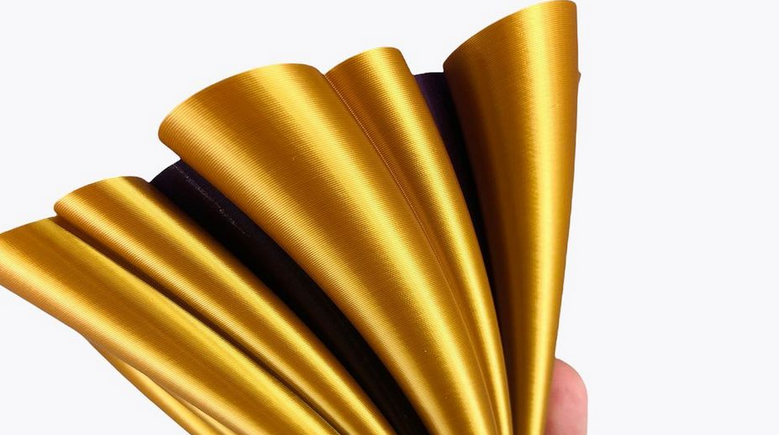3D printing has long been a dream for the future. The idea that you could just print anything you wanted was absolutely unthinkable. Yet it is possible: 3D printers have entered society and are now even available to consumers. The futuristic-looking devices are causing a true revolution. Would you also like to take a step into the layered world of 3D printing, but you don't really know where to start? We would love to teach you something about your new hobby. This is our guide to 3D printing for beginners.
What is 3D printing?
3D printing is the process of converting a digital file (design) into a three-dimensional tangible object. Using 'additive technology', an object is created by successively placing layers of filament. Each of these layers is a thin cross-section of the final object that together form one tangible product.
Unfortunately, we have to help you out of your dream: you can print a lot, but not everything. For example, you can't just make holes in everything or create objects with 'overhang'. A 3D printer cannot print in the air, only layer upon layer. You must therefore take this into account in your design. If it is not possible to do something with this while drawing, the slicer can always help you out. With different structures under the overhanging part you can still generate a successful 3D print.
3D printer for beginners
To start with 3D printing, you need a 3D printer. Quite logical, because without a printer you can't print, right? You can build a 3D printer yourself, but there are also plenty of ready-made devices that make the step towards 3D printing a lot easier. The entry-level printer of the moment is the Prusa Mini. The Prusa Mini has been named the best start-up 3D printer of 2021. This printer produces flawlessly reproducible results. What makes the Prusa Mini printer so suitable for beginners is that the printer can be quickly assembled. You can get started with it right away. All versions of the Prusa Mini printer are supplied with a flexible build plate and the printer works with almost all materials. So you can print anything with it. Besides the fact that it is easy to assemble, there is also a whole community behind the Prusa Mini. These tips, print settings, but also new software updates are shared here most quickly. Always useful to have the latest firmware running on your 3D printer!

Print material: Prusament
There are different types of filament available for FDM printers, such as the Prusa Mini. Filament is the printing material that is melted down to form the final object. The choice of material depends on the object to be printed. Each material has its own properties and challenges for printability. Not all FDM printers can print all materials, so first check what exactly is possible for your printer
The most commonly used filament types for FDM printers are PLA , ABS andPETG . Do you want to be sure that your Prusa Mini uses the right material for printing? Then choose Prusament PLA . This is an in-house filament from Prusa Research that is specially made for Prusa 3D printers.
3D printing software
To get your 3D printer working, you need a software program. So-called slicer software ensures that Gcode files are converted into STL files. These are files that your printer can actually read and output. As a beginner, we recommend that you work with a slicer that comes with your printer. Do you choose the Prusa Mini printer? Make sure you use the PrucaSlicer.
Do you want to design something yourself? Then you also need design software in addition to your slicer software. There are many such software programs available, including free ones. Not sure how to go about doing that? A YouTube tutorial will help you a lot! Think of Fusion360 or Tinkercad as first sources of inspiration.
3D printer designs
You may be able to draw pretty well in 3D, but that is not for everyone. Is 3D design not for you? Don't worry, there are more than enough free 3D designs available online. Many objects are free, but there are also files that are offered for a fee. You can find these files on Printables, Thingiverse, Pinshape, MyMiniFactory or Cults 3D. Not all models that you will find on these websites are printable for your printer. When choosing print models, consider the print volume of your printer, although you can also divide large objects and merge them later.
Let the printing begin!
We can fill an entire telephone directory with a manual for 3D printing. Even then, there will still be topics we haven't covered. The settings of each printer are different. So if you are not sure exactly how printing works, we refer you to the manual. There is a manual available for every 3D printer, whether or not on the internet. Moreover, there are plenty of videos or forums where fellow 3D printer hobbyists share their experiences and advice. Just like with pancakes, your first print probably won't be of top quality. Practice makes perfect: you will have to repeat it a few times before you master it.

Advice we can give you is: make sure that your printing surface is always clean. Greasy fingers or dust could reduce the adhesion of your print surface. Also make use of the functionalities that your printer offers. If your printer has automatic bed leveling (print surface calibration), it is useful to use it every print. This will improve your results. Good luck with printing!

